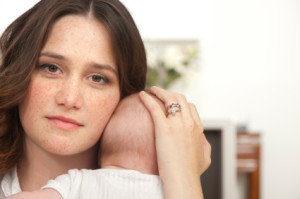First-Hand Account of Living with Cerebral Palsy
 Twenty-year-old Miranda Casanova understands first-hand the challenges of being physically disabled. Diagnosed with cerebral palsy at a young age, the self-proclaimed “wheelchair-bound sass queen” has been chronicling her struggles and triumphs in life as a motivational speaker, blogger and aspiring writer.
Twenty-year-old Miranda Casanova understands first-hand the challenges of being physically disabled. Diagnosed with cerebral palsy at a young age, the self-proclaimed “wheelchair-bound sass queen” has been chronicling her struggles and triumphs in life as a motivational speaker, blogger and aspiring writer.
In a recent op-ed piece published in USA Today, the plucky Casanova celebrates her graduation from Moorpark Community College – a feat of which she is exceedingly proud. After promising herself that cerebral palsy would never undermine her success, Casanova was accepted into the school, where she maintained a strong B+ average and graduated after just two and a half years.
“While I achieved a lot academically, perhaps what means the most about my experience at Moorpark is that it allowed me to change the way people perceive disabilities. I have always maintained a goal not only to achieve great things in academics, but also to be the catalyst of change. My time at community college has allowed me to do that through my work as a motivational speaker and for that I am so very grateful.”
Graduates college with cerebral palsy
Casanova writes that she hopes to move on to the prestigious Stanford University this coming fall to continue her education and give hope to anyone, who like herself, suffers from a neurological disorder. In USA Today, she writes “I may have difficulty walking, I may require a wheelchair to get around and I may get fatigued easily. But I won’t let it deter me or stop me from getting an education.”
Casanova decided to become a motivational speaker after high school peers bombarded her with questions about her disabilities. By opening up a frank dialogue she hoped to dispel any misconceptions about the condition and inspire self-empowerment and confidence in others born or diagnosed with cerebral palsy. In addition to her plans for continuing education, she is also starting work on a memoir to share stories and inspirations about her personal life.
Cerebral palsy overview
Children born with cerebral palsy often face a number of uphill struggles physically, emotionally and socially. Depending on the type of CP, individuals may have speech impairments, loss of hearing, seizures, problems with coordination and muscle control, or suffer severe cognitive and mental deficits. Causes of cerebral palsy include bacterial meningitis or viral encephalitis, or head trauma resulting from a fall or car accident. In other cases, CP may be caused by brain damage at birth – usually the result of prolonged oxygen deprivation to the fetus.
Tragically, some of these birth injuries can be traced back to negligent medical care during labor and delivery, when inexperienced or overworked doctors or nurses miss vital signs of fetal distress, or fail to order an emergency C-section in time. Other times, instances of shoulder dystocia are mismanaged, leaving the baby trapped in the birth canal for far too long.
Malpractice and birth injury lawsuits
Every year, thousands of heartbroken families pursue compensation for avoidable birth injuries caused by medical malpractice. Compensation secured through filing a cerebral palsy lawsuit may never erase the catastrophic toll of raising a child with CP, but it can alleviate financial burdens and ensure proper medical care and treatment is available for the remainder of their lives.
Unfortunately, there is no known cure for cerebral palsy – only drugs, surgery and therapy meant to alleviate symptoms and improve motor skills. Women like Casanova, however, prove that life with mild cases of cerebral palsy can be rewarding and enriching on many levels.
- USA Today, Voices: Graduating college with cerebral palsy http://college.usatoday.com/2014/12/29/voices-graduating-college-with-cerebral-palsy/
- NINDS, What is Cerebral Palsy? http://www.ninds.nih.gov/disorders/cerebral_palsy/cerebral_palsy.htm


 Resources
Resources
 Resources
Resources
